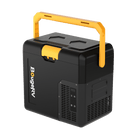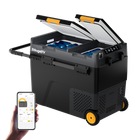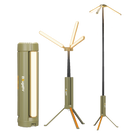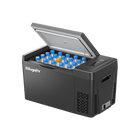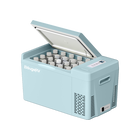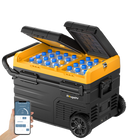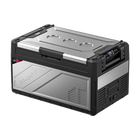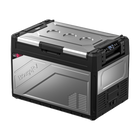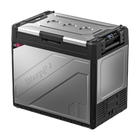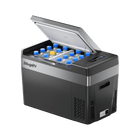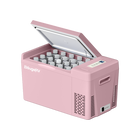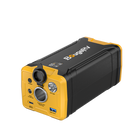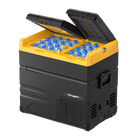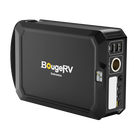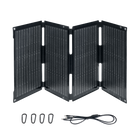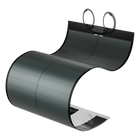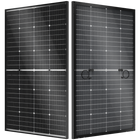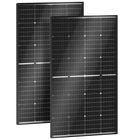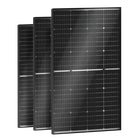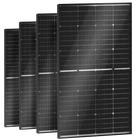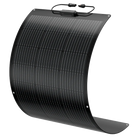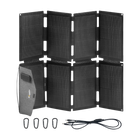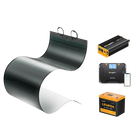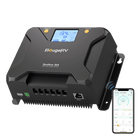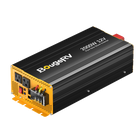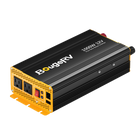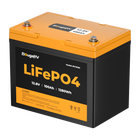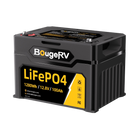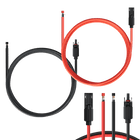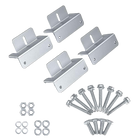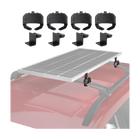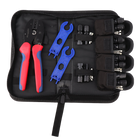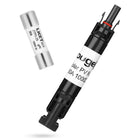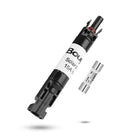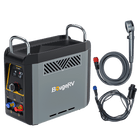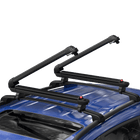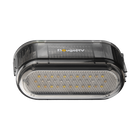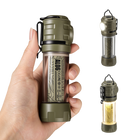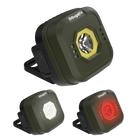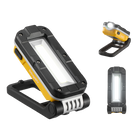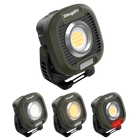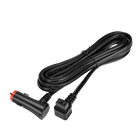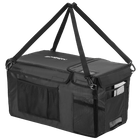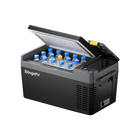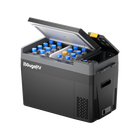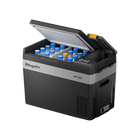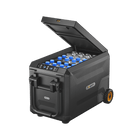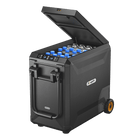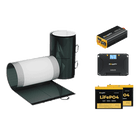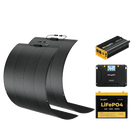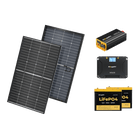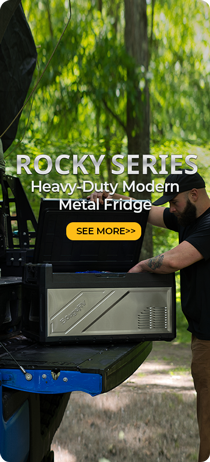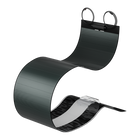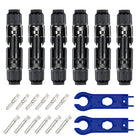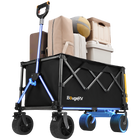Battery Banks for Solar PV Systems

In recent years, solar PV systems have emerged as a popular choice for consumers who want to escape heavy energy bills and adopt renewable energy for their properties. The spike in solar energy in the US has been sharp, and according to statistics, 2.7 million residential properties are powered by installed solar PV systems.
Still, this number is growing at a tremendous rate. The same case is for commercial properties and the industrial sectors, where owners are swapping traditional generation with renewable energy systems.

- Classification of Solar PV Systems
- Intermittency Issues With Solar PV Systems
- Solar Battery Banks
- BougeRV Batteries for Your Solar Battery Banks
- Frequently Asked Questions
Classification of Solar PV Systems
Solar PV systems are classified into various types. These main configurations are listed as follows:
1. On-grid Solar PV Systems
These are grid-connected solar energy systems. In this configuration, solar panels produce DC power which is inverted into AC power and supplied to the AC grids. This configuration does not require any energy storage system because they are mostly production-oriented systems.
2. Net Metering Model
In the net metering model, solar panels generate energy supplied to the load after being inverted by an inverter. The excess power the load can not utilize is supplied to the grid, and utility companies are charged against this supply.
3. Stand Alone Solar PV Systems
These are off-grid systems with no grid connectivity with solar energy production. The generated energy is consumed directly by the load. Such systems require energy storage for energy reliability when solar energy production is affected. For example, bad weather, etc.
4. Hybrid Configuration
This configuration combines the merits of standalone and net metering configurations. Solar PV DC power is inverted through centralized control and supplied to the load requirements or net metered to the grid. The extra energy is stored in the battery banks for backup purposes.
Intermittency Issues With Solar PV Systems
However, typical problems with solar PV systems are still there. Despite their clean and green features, incentives, tax benefits, and freedom from high energy bills, intermittency is a big challenge for consumers using solar panels as their primary energy generator, not to let the changing solar resource obstruct energy production.
Solar Battery Banks
The answer to this challenge is battery banks. As the name suggests, battery banks are basically the collection of batteries linked with each other through series or parallel connection configurations. During the hours when solar panels generate additional energy, battery banks are charged via the charge controllers. When the solar PV system is not generating according to its designed capacity, battery banks give back their stored energy to the system and keep it running without any hindrance. The charged batteries store DC power, which is converted into AC power through the help of an inverter and supplied to the load.
Generally, battery banks are of two categories. The first is the standby battery bank that serves as backup energy storage for the times when the original production is low or zero. The second is a deep cycle battery bank that is typically used for deep cycle applications requiring extension in the usage time.
What's more important? Solar Panels or Battery Banks?
Many consumers believe that solar panels are the most critical component in a solar PV system, and the selection of efficient solar panels should be their key concern. This might be true to an extent, but on a practical note, investing in an optimum battery can bring much better results.

Lithium Iron Phosphate Batteries for Battery Banks
There are many options for batteries to attach to a solar PV system; however, one of the most credible choices is Lithium Iron Phosphate Batteries. These batteries have Lithium salt used as an electrolyte with a graphite cathode and a lithium metal oxide cathode. At the same time, a polymer membrane is used as a separator between them. During the excessive production from solar panels, batteries are charged, and Lithium ions transfer from the graphite cathode to the anode. In the discharging process, an opposite transfer occurs, and electron flow is generated, which motivates the electric charge outside the battery.
BougeRV Batteries for Your Solar Battery Banks
With years of experience in the renewable energy sector spanning numerous satisfied clients, BougeRV premises its brand on excellence and dedication. Our commitment to our customers is founded on providing them with top-notch products at market-beating prices. Striving for the best quality, our mission is to become a reliable companion in your journey to have a sustainable energy future.
Based on high-tech research and development, we proudly claim that BougeRV LiFePO4 batteries are one of the best choices for building your solar battery bank. They have a long lifespan to match the operation of solar panels ranging from more than 5000 duty cycles. With their high endurance, they are heavy-duty and a low-maintenance option because there is no liquid electrolyte that would require a constant check and balance, such as in lead acid batteries, etc. Our batteries are super light and easy to carry with swift charging times that can get them ready in no time for attaching to a solar energy system anytime, anywhere.
Frequently Asked Questions
What battery is suitable for building the solar battery bank?
Both standby and deep cycle batteries are used in practice to design solar battery banks. Overall, solar batteries must undergo continuous full charge and deep discharge, and deep cycle batteries are a feasible option to make battery banks for solar PV systems.
What size battery bank should I use for my solar energy system?
The selection of battery bank size is directly related to the AC load the solar energy system will operate. Let's suppose that your solar PV system has to power 1000W AC loads, so the backup requirement is at least two hours. The following calculation procedure will guide us in selecting the needed size:
1000W x 2 hours = 2000Wh, which suggests we need 2000Wh battery capacity. If we use BougeRV 12V 100Ah LiFePO4 battery then the singular battery capacity is12V x 100Ah = 1200 Wh. This interprets that 2000Wh / 1200Wh = 1.66, which means that we would require 2 batteries to cater to our needs.
What are the key considerations before purchasing batteries for my solar battery bank?
Some aspects that you should carefully consider before purchasing batteries for your battery bank are mentioned below:
- High-end quality with a budget-friendly price
- Optimized value of duty cycles
- Battery voltage should resonate with the system requirements for which you are purchasing the battery
- Battery capacity should match the backup timing of your system







